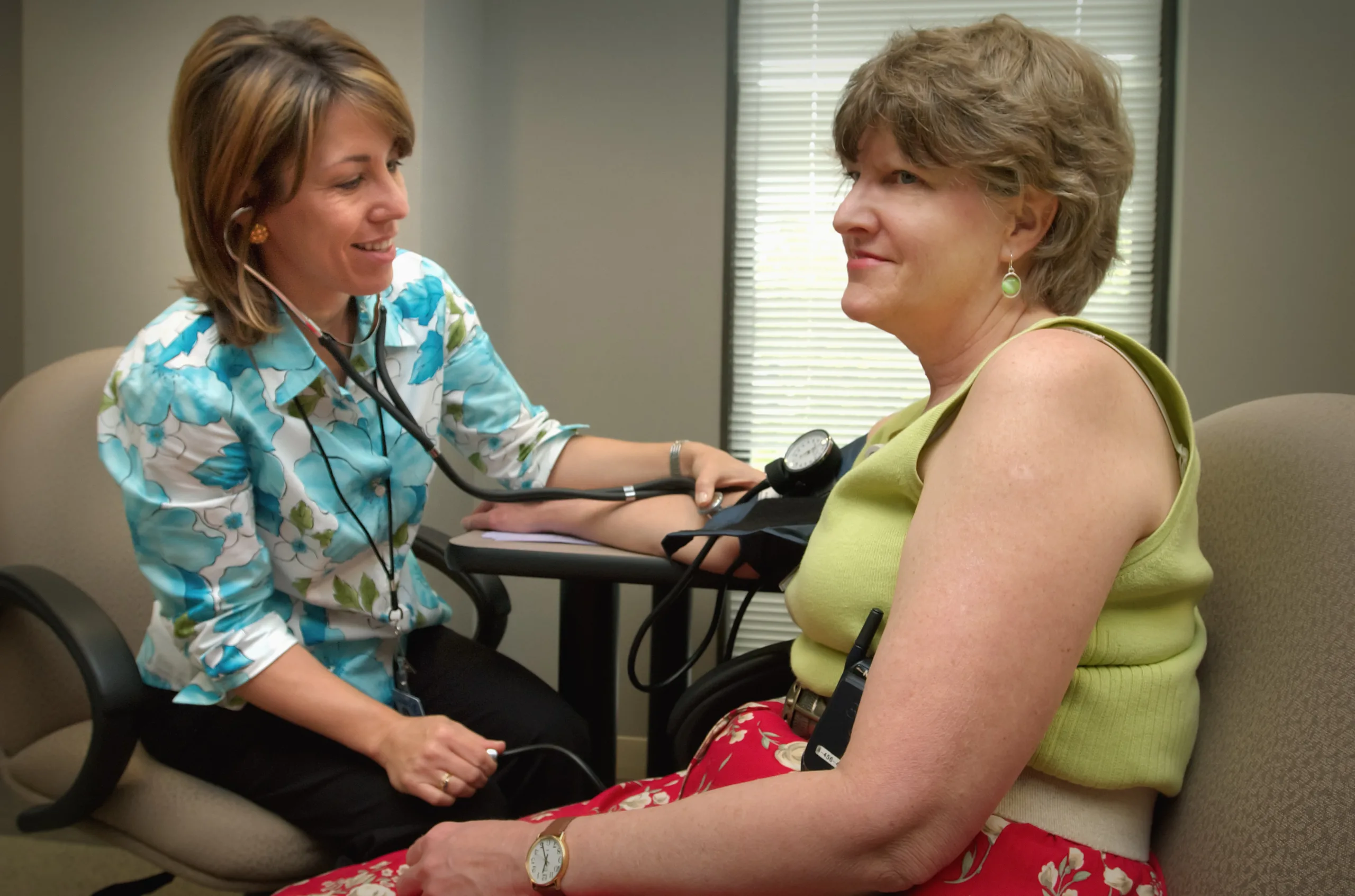High blood pressure, sometimes referred to as the “unseen threat,” is a prevalent health condition that many individuals unknowingly suffer from1. It’s a significant contributor to heart-related diseases2, but the silver lining is that it can be effectively managed with consistent monitoring3. One of the most efficient ways to keep a check on your blood pressure is by measuring it yourself at home4. This article will walk you through the process in a straightforward, easy-to-grasp manner.
Decoding Blood Pressure
Before we get into the specifics, let’s quickly understand what blood pressure signifies. It’s the pressure exerted by your circulating blood on the walls of your blood vessels5. It’s quantified in millimeters of mercury (mmHg) and is represented as two figures6. The first (higher) figure denotes the systolic pressure, which is the pressure when your heart contracts7. The second (lower) figure denotes the diastolic pressure, the pressure when your heart is in a relaxed state between contractions8.
The Importance of Self-Measurement
Self-measuring blood pressure (SMBP) is a practical approach to keep a check on your blood pressure levels outside your doctor’s clinic9. It allows you to measure your blood pressure at various times throughout the day, providing a more detailed understanding of your heart’s health10. Moreover, it can assist your doctor in formulating or modifying your treatment plan if required11.
Kickstarting the Process
To measure your blood pressure at home, you’ll require a home blood pressure monitor12. These devices can be easily procured from pharmacies or online13. Ensure you select one that measures blood pressure at your upper arm for the most accurate results14.
A Step-by-Step Guide to Self-Measuring Blood Pressure
- Preparation for the Reading: Refrain from eating, exercising, or consuming caffeine or alcohol for at least 30 minutes before taking your blood pressure15. These activities can temporarily elevate your blood pressure levels and result in inaccurate readings16.
- Comfortable Seating: Position yourself at a table or desk with your feet flat on the ground17. Rest your arm on the table so it’s at the same level as your heart18. This posture aids in ensuring an accurate reading19.
- Correct Cuff Placement: Secure the cuff around your upper arm, ensuring it’s snug but not overly tight20. The lower edge of the cuff should be approximately 1 inch above the bend of your elbow21.
- Maintain Calm and Relaxation: Allow yourself to relax for about 5 minutes before initiating the measurement22. Attempt to remain calm during the reading, as anxiety can cause a spike in your blood pressure23.
- Multiple Readings: It’s advisable to take at least two readings, 1 minute apart24. This provides a more accurate average reading25.
- Recording Your Readings: Maintain a log of your readings, including the date and time26. This record can be beneficial for your doctor to comprehend your blood pressure patterns27.
A Word of Caution
While self-measuring your blood pressure is an excellent tool for managing your heart health, it doesn’t substitute regular medical check-ups28. Always reach out to your healthcare provider if you observe any significant changes inyour readings or if you have any concerns about your blood pressure29.
By taking a proactive role in monitoring your blood pressure, you’re taking a significant stride towards improved heart health30. So, why not get started today?
References
Please remember that this article simplifies the process and should not replace professional medical advice. Always consult with a healthcare provider for any health concerns.
Footnotes
- National Heart, Lung, and Blood Institute. (n.d.). High Blood Pressure. Retrieved from https://www.nhlbi.nih.gov/health-topics/high-blood-pressure ↩
- American Heart Association. (2018). Understanding Blood Pressure Readings. Retrieved from https://www.heart.org/en/health-topics/high-blood-pressure/understanding-blood-pressure-readings ↩
- Mayo Clinic. (2020). 10 ways to control high blood pressure without medication. Retrieved from https://www.mayoclinic.org/diseases-conditions/high-blood-pressure/in-depth/high-blood-pressure/art-20046974 ↩
- National Heart, Lung, and Blood Institute. (n.d.). Self-Measured Blood Pressure Monitoring. Retrieved from https://www.nhlbi.nih.gov/health-topics/self-measured-blood-pressure-monitoring ↩
- American Heart Association. (2018). What is High Blood Pressure? Retrieved from https://www.heart.org/en/health-topics/high-blood-pressure/the-facts-about-high-blood-pressure/what-is-high-blood-pressure ↩
- Mayo Clinic. (2019). Blood pressure measurement: An overview. Retrieved from https://www.mayoclinic.org/tests-procedures/blood-pressure-test/about/pac-20393096 ↩
- American Heart Association. (2018). Understanding Blood Pressure Readings. Retrieved from https://www.heart.org/en/health-topics/high-blood-pressure/understanding-blood-pressure-readings ↩
- Ibid. ↩
- National Heart, Lung, and Blood Institute. (n.d.). Self-Measured Blood Pressure Monitoring. Retrieved from https://www.nhlbi.nih.gov/health-topics/self-measured-blood-pressure-monitoring ↩
- Ibid. ↩
- Ibid. ↩
- Mayo Clinic. (2019). Home blood pressure monitoring. Retrieved from https://www.mayoclinic.org/diseases-conditions/high-blood-pressure/in-depth/high-blood-pressure/art-20047889 ↩
- Ibid. ↩
- Ibid. ↩
- National Heart, Lung, and Blood Institute. (n.d.). Self-Measured Blood Pressure Monitoring. Retrieved from https://www.nhlbi.nih.gov/health-topics/self-measured-blood-pressure-monitoring ↩
- Ibid. ↩
- Ibid. ↩
- Ibid. ↩
- Ibid. ↩
- Ibid. ↩
- Ibid. ↩
- Ibid. ↩
- Ibid. ↩
- Ibid. ↩
- Ibid. ↩
- Ibid. ↩
- Ibid. ↩
- Mayo Clinic. (2019). Home blood pressure monitoring. Retrieved from https://www.mayoclinic.org/diseases-conditions/high-blood-pressure/in-depth/high-blood-pressure/art-20047889 ↩
- Ibid. ↩
- National Heart, Lung, and Blood Institute. (n.d.). Self-Measured Blood Pressure Monitoring. Retrieved from https://www.nhlbi.nih.gov/health-topics/self-measured-blood-pressure-monitoring ↩

